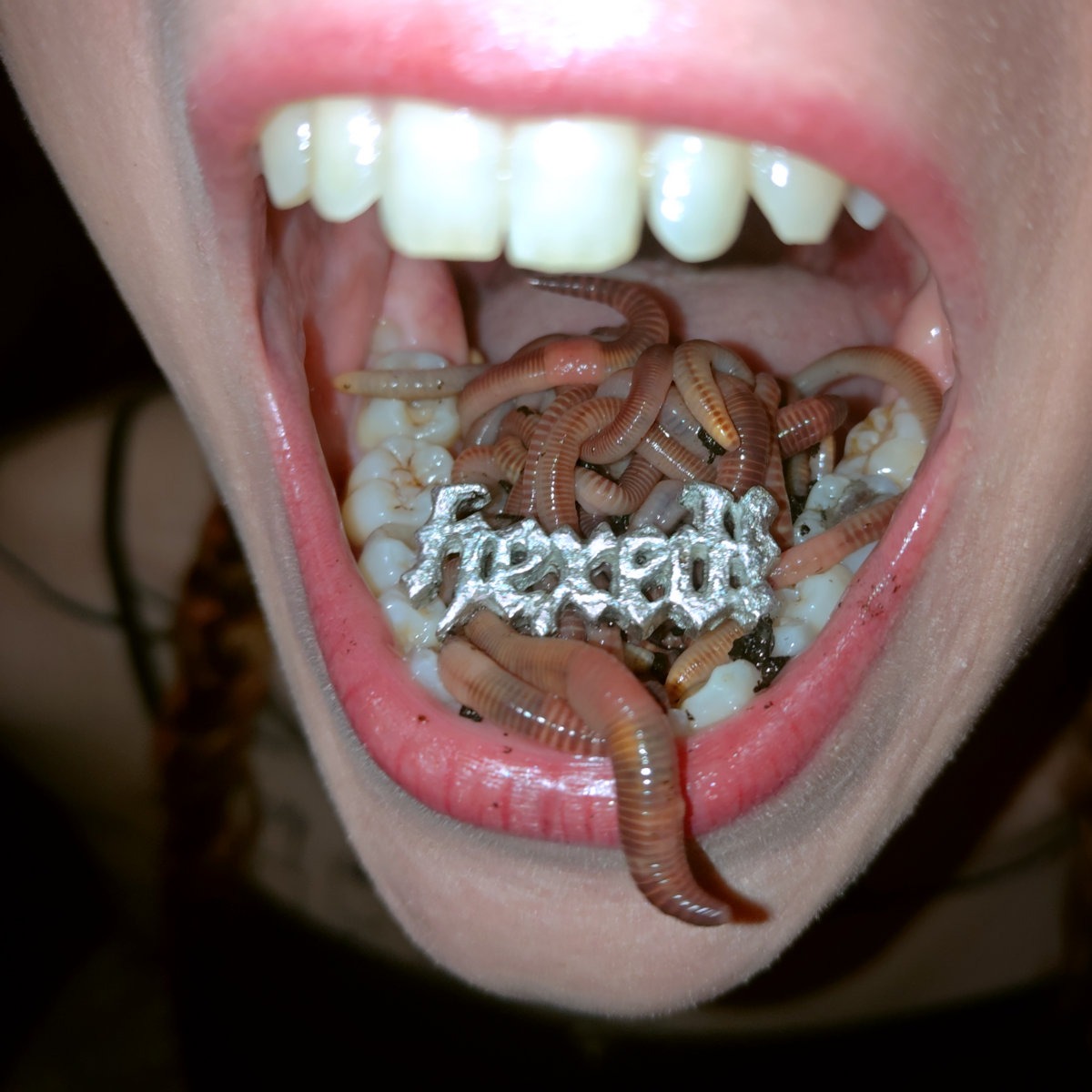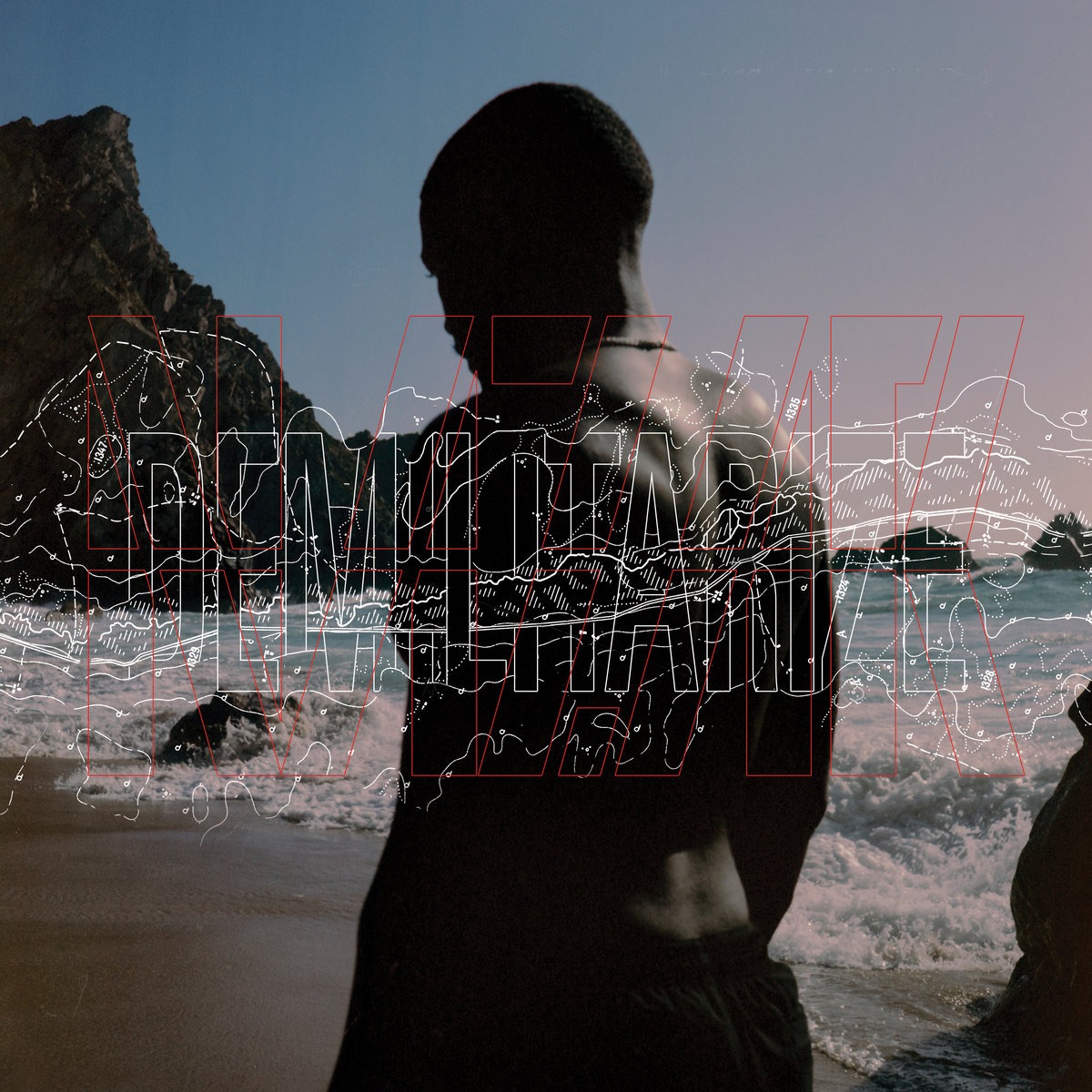Tracing the “hypersoul” in Hyperdub’s Sonic Post / Warfare
Published March, 2025
by Easterndaze

The reputation of Hyperdub, one of UK’s most celebrated labels for underground electronica, precedes this article. What began in 2004 in the hands of Steve Goodman aka Kode9, fueled largely by his time with the early dubstep scene in the UK, celebrated its 20 years in 2024 with a sprawling tour that presented its crew in varying constellations. Today, Hyperdub’s oeuvre has grown out of its dubstep roots. But this article is not a retrospective of Hyperdub’s 20 years. Here, I wish to take inspiration from Goodman’s seminal 2009 text, Sonic Warfare, to frame Hyperdub’s 2025 catalogue against the military-industrial-entertainment-complex of our current times.
17.01.2025
Text: মm
By the half-year mark, Hyperdub has already released 3 albums that are enjoying widespread critical acclaim in media discourses of the EU-UK-US undergrounds: aya’s hexed!, Nazar’s Demilitarize, and DJ Haram’s Beside Myself. Nazar and aya’s albums have already been listed as some of the best music of 2025, and DJ Haram’s very recent release is making its own wave. It would be unfair to credit Hyperdub alone for the aesthetic, political and sonic impact of these works; the artists themselves have rightfully sculpted their own artistry over the years. But I am interested in contemplating how Hyperdub’s sonic branding and capital in the machinations of the electronic music markets of the global North deploys what Goodman himself articulates as “an affective mobilization as opposed to the modulation of preemptive capital,” if at all.

“where sound is contagious, physical and viral”
Goodman’s book “Sonic Warfare” is a sprawling, disjointed, but consistently self-referential read, where he remains in conversation with Spinoza’s conception of affect, Eshun’s poetic engineering of the futurhythmachine, Gilroy’s Black Atlantic, among others. But what intrigues me the most is his use of the language of epidemiology to develop a thought of “audio virology” in order to articulate “a politics of frequency.” While the text was developed before the all-consuming economy of viral digital content that we live in now, he thought with pirate economies, bass materialism and affective tonality to articulate battlefields where sound is contagious, physical and viral in a way that it mutates instead of merely copying itself. In the simplest sense, his text is about how sounds can make bad vibes and what can be done with these bad vibes. He treats audio as a vibrational force on the register of affect – before it is representational or cognitive and in excess of the human experience – but also engages with the politics of discursive formations, production processes and market strategies to trace what it does as a contagion in sonic warfare.

A Hyperdub virology
In its own right, as a pioneering force, Hyperdub has cemented itself as an institution of the UK underground and of its exchanges with the US along the Black Atlantic. But what it represents in terms of aesthetics and style remains broad. Despite its roots in dubstep, the label now boasts an impressive range, echoing what Hyperdub designer Optigram once said, “If anything, I guess Hyperdub are fighting from being pigeon-holed – I think they’ve finally got rid of those dubstep shackles.” Through the range of Kode9’s selection of artists, one can trace reflections of the legacy of intellectual thought and musical cultures he engages with in the book.
“Hyperdub” comes into conversation as a virus that spread since the 1970s among the hardcore continuum in the UK. With its roots in Jamaican reggae dub, the dub virus becomes a manifestation of diasporic extensions and mutations along post-colonial routes and finds it ways to leave its forever haunting on the electronic music cultures of the colonial mothership. In conversation with Mark Fisher’s discussion of “dubtraction”, he articulates a dub virology where the original reggae morphs and mutates into “versions” with technologies of sound effects. The dub virus is everywhere on the UK’s legacy of electronic music cultures since the 1980s. And what is “hyperdub” is the practice of what Fisher describes as “the production of virtualities, implied songs all the sweeter for their lack of solid presence. It’s all about what is left out, an involutive process that identities desire with the occupation of a plateau.”
In its capacity to prevent a singular idea of the Hyperdub sound, mutations developed by its artists on futurhythmachines come to the fore. aya’s hexed! straddles the worlds of death metal and hardcore electronica, further pushed to disorienting and scrambling effects upon the senses with her screaming and howling poetic ruminations. DJ Haram’s Beside Myself cements her idea of the “anti-format”, blending Jersey club, hip-hop and Middle Eastern instrumentation into sensually uttered verses and ominous electronic experimentation. Nazar’s Demilitarize builds upon his previous exercise of “rough kuduro” but softens it at the roots with his yearning voice, cinematic ambience and RnB influences.

These amalgamations are anything but random. Nazar’s “rough kuduro” era was established by his debut album Guerilla, an album that explicitly framed Kuduro in Angola’s Civil War through his own family’s history and roles in the war. With Demilitarize, he was further propelled by his own personal journey of healing to move away from Guerilla’s “weight of almost a documentary” and find vulnerability in the promise of love and recover. Nazar is not the only artist of the Angolan diaspora in Europe who is working with the polyrhythmic matrix of Kuduro; but he distinguishes himself from Afro-Portuguese scenes like Lisbon’s Batida not only because of his position outside of these scenes but also because his work emerges as a discontinuous manifestation of his very personal experiences through his pasts and presents. DJ Haram’s work as a working-class club culture worker in New York and Middle Eastern roots are like the sticky bonds that bring together all of her collaborators, influences and a decade long musical career in punk and theatre scenes. But her album does not sound like a SWANA-club-night. Instead, in her decision to use the term “Middle Eastern” for her ethnic roots in spite of the changing discourse around the terminology, she teases the lines between orientalist gazes and propagandist rebellion. In fact, she claims indigeneity in her use of the drums and instruments of her culture. Doubled down with her hip-hop collaborators and pulsating energy of her hometown’s club sounds, her album emerges as a post-hip-hop mutation for guttural collective mobilization.
Much like the dub virus, the hyperdub virus defies a solid presence as these artists usher mutations in their remixological fields. Through Nazar’s percussion layers that float through dense ambience or DJ Haram’s disruptive rage-fueled skits outlined with horns and percussions, one can neither call the former a Kuduro album nor the later a Middle Eastern album. And none of these albums can be simply categorized as club records either. In their own right, they are mutations, carrying impressions that still affect the listener in familiar and evocative ways.

To be Hypersoul in wartimes with Contagious Orality
Eshun theorized the Futurhythmachine through Afrofuturist sonic fictions in a way that resists chronology, continuity and heroic reclamations of the past or the streets. Very early on in his book, More Brilliant Than The Sun, he forsook the human and aspirations to humanize Black music. In Sonic Warfare, Goodman discusses criticisms lodged against Eshun by Simon Reynolds and Alexander Weheliye for a lack of acknowledgement of voice and soul in Black music towards Afrofuturist audio virology. Goodman shows how these critiques are misplaced because Eshun’s focus was on the futurhythmachine, not the voice. Here, Weheliye’s concept of the “hypersoul” is added to “hyperdub” to discuss a contagious orality that is constructed from the “affective ecology” and its technologies, warning readers of the dangers of prioritizing the written word over the sonic vibrational force. For Goodman, “Contagious orality must therefore be placed within the rhythmic and vibrational infrastructure of the plane of machinic enunciation.”
Originally published by Struma+Iodine. This article is brought to you as part of the EM GUIDE project – an initiative dedicated to empowering independent music magazines and strengthening the underground music scene in Europe. Read more about the project at emgui.de.
Funded by the European Union. Views and opinions expressed are, however, those of the author(s) only and do not necessarily reflect those of the European Union (EU) or the European Education and Culture Executive Agency (EACEA). Neither the EU nor EACEA can be held responsible for them.